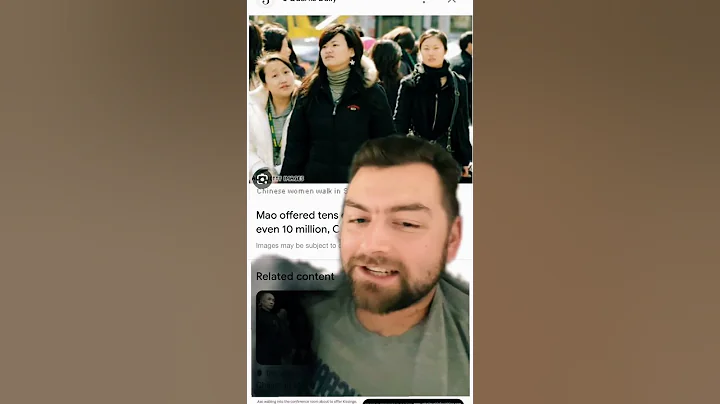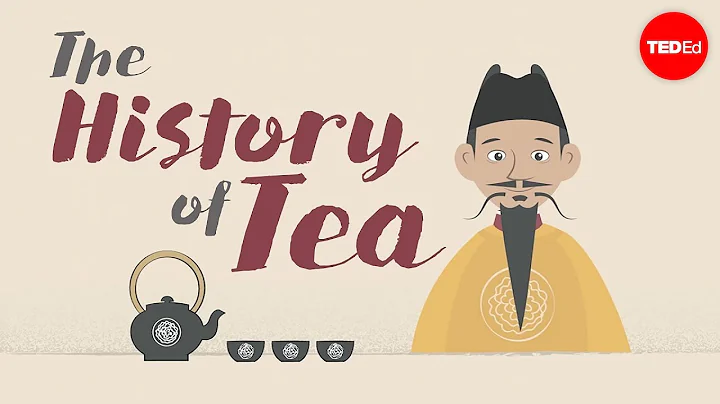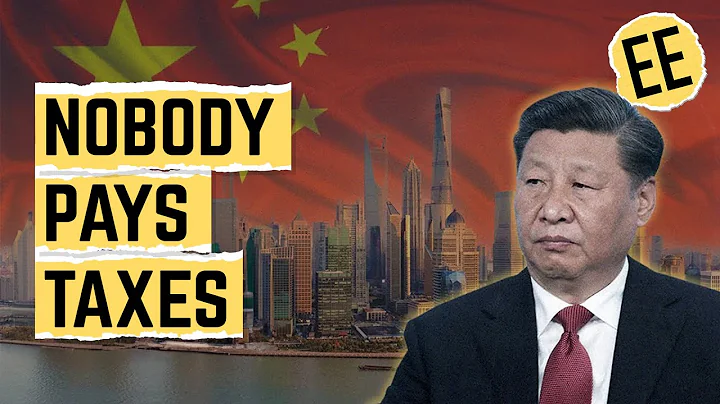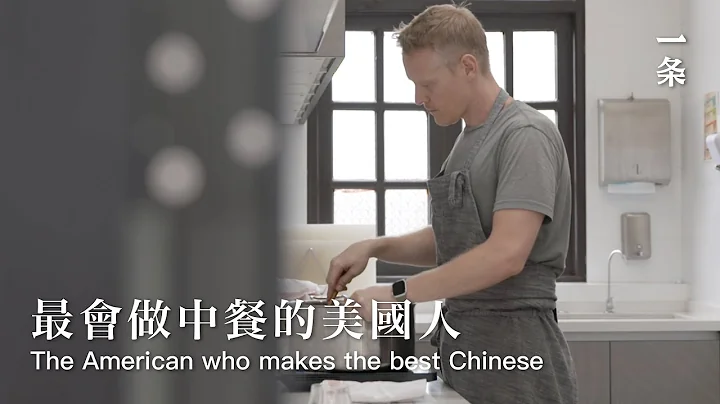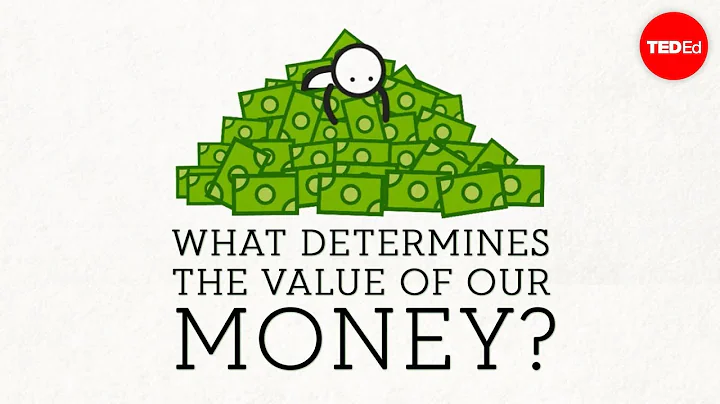Introduction
On the third day of the first lunar month of the fourth year of Jiaqing (February 7, 1799), the 89-year-old Qianlong died of illness in Yangxin Hall . Ten days later, Jiaqing, who had gone crazy, immediately imprisoned He Meiren, and then came to the beloved Home confiscation. How many copies were copied specifically? Historians have different calculations. Some say there are 10 million taels of silver, while others say it is as much as 800 million taels. The mainstream view is that it is between 20-30 million taels, which is already scary. Daqing one year The tax revenue is only 70 million taels, which is really huge corruption.
In fact, when it comes to making money, and Shen are younger brothers than his master Qianlong. During the 60 years of Qianlong's reign, he made six tours to the south of the Yangtze River, four tours to the east, and also found time to fight 10 major battles, completing his "Ten Complete Martial Arts".
The old man is a decent man, and he always pays attention to pomp and circumstance in everything he does. Thousands of Old Banquets are all trivial matters. To celebrate his mother's birthday, large and small stages can be set up in the capital for more than ten miles.
It is no exaggeration to say that Qianlong spent money non-stop.

and Meiren specialize in making money for the emperor. To put it bluntly, they are just white gloves . Many of these properties are squandered.
According to statistics from Taiwanese scholar Lai Huimin, from the 10th to 60th year of Qianlong's reign, the old man earned himself a total of 68.8 million taels of private money.
Note that this is private money, not income from the national treasury!
is basically spent.
Where did Qianlong’s money come from? There are too many methods, one of which is selling ginseng. Today I will talk to you about the Qing Dynasty emperors and ginseng.
2: Aixinjueluo Family history
For the Aixinjueluo family, selling ginseng is an ancestral craft.
Starting from and Ming Dynasty , the Jurchens dug ginseng everywhere in the deep mountains and old forests of the Northeast, and then sold it on the border. Ginseng was one of the largest trades between the Jurchens and the Ming Dynasty. One transaction was several thousand kilograms. At that time, It's purely wild. Wanli html's transaction volume in the past four years has been as much as 30,000 to 40,000 taels of silver at a time.

Beijing Tongrentang Pharmacy Ginseng
Nurhaci started his business by selling ginseng. In order to solve the problem of storing fresh ginseng, he specially invented a processing method of "cooking and drying". The goods were hard, so sales increased, and by the way, the North Korean market was also opened.
Ginseng became the main source of funds for his Aixinjueluo family. Only then did he have the economic strength to unify the Jurchen tribes. Even the money for building the capital "Hetuala City" came from the Jurchens selling ginseng and mink. Leather , pearls and other rare items were earned from Ming Dynasty and North Korea.
So for Houjin , ginseng is the fighting power!
So Nurhachi ordered that the mountain must be guarded by me. Anyone who steals ginseng from foreigners will be killed without mercy. So the king sent people to patrol the mountains everywhere. " Qing History Manuscript " records that soon after the establishment of the Later Jin Dynasty, 50 unlucky people who came from the Ming Dynasty and North Korea to steal ginseng were caught and all were chopped down.
Nuerhachi initially distributed several large ginseng mountains to eight major families, letting them each take charge of their share. However, after entering the customs, starting from Shunzhi, Ninggu Pagoda, Suiha River and other ginseng mountains are not allowed to be harvested by others.
In the forty-eighth year of Kangxi, the ginseng in the Northeast was monopolized by the emperor's family. All ginseng had to be sent to the palace, and the ginseng in the country became the emperor's private property.
Three: Starting a Hard Business
In the Qing Dynasty, ginseng was divided into six grades: special grade, first grade, second grade, third grade, fourth grade and fifth grade.
The six grades are all available, and those above the fourth grade are very rare. Less than 10% of the annual tribute is only a fraction. It is reserved for the emperor and members of the royal family. The fifth grade ginseng accounts for the majority. In addition, there are also broken ones, such as slag powder, pickled dices and reeds. The emperor does not dislike them and wants them all. They are all stored in and the Ministry of Internal Affairs .
The Ministry of Internal Affairs is an agency that specializes in managing royal affairs. In addition to taking care of the emperor's food, clothing, housing, transportation, horse riding and hunting, an important function is to manage money for the emperor and make money for the emperor.
Starting from Kangxi , the ginseng inventory of the Ministry of Internal Affairs has been more than 1,000 kilograms, and in good years it can reach more than 2,000 kilograms. However, if you eat too much of this stuff, you will suffer from a fire and die. The emperor does not dare to eat more. Every year, the royal family It only consumes one or two hundred kilograms, and the palace purchases large quantities of it from the Northeast every year. In addition, ginseng is not an ingot. If it is not stored for a long time, it will start to grow worms and mold.
So the people from the Ministry of Internal Affairs gave Kangxi a discount, saying that the emperor, the inventory pressure is too great, and demand-side reforms must be carried out. Keep the good ones for your own use, and sell the rest quickly. It would be great to get some money.
Kangxi thought it was reliable, so he took out the ginseng in the palace and sold it in the market, mainly the fifth-grade ginseng and the beard seeds. At first, it could only be sold in Beijing. Later, Kangxi thought that there were many rich people in Jiangnan, so he might be able to sell it at a good price.
then issued an order to send a large amount of ginseng to Jiangnan and give it to his little brother, Jiangning Weaving Cao Yin sold it there. Cao Yin was Cao Xueqin's grandfather and the best friend of Kangxi's best friends.

After Cao Yin's death, his stepson Cao Fu, as well as Cao Yin's brother-in-law, Suzhou Weaving Li Xu and Hangzhou weaving Sun Wencheng, three of them, that is, the three weaving companies in Jiangnan, became ginseng sellers. After the main force made money, it was handed over to the emperor's small treasury.
Unexpectedly, selling ginseng was one of the reasons that crushed the Cao family.
Kangxi originally had a beautiful idea, but he never expected that these three weavings on the ginseng were made by amateurs, and the price of ginseng was getting lower year by year. In the fifty-fourth year of Kangxi's reign, a pound of first-class ginseng could be sold for 82 taels in Beijing. In the fifty-seventh year of Kangxi, Cao Fu and three other weavers sold first-class ginseng for only 61 taels. In the sixty-first year of Kangxi's reign, it sold for 60 taels. Two years later, the price was getting lower year by year, which made Kangxi very dissatisfied. He wondered why there were many rich people in Jiangnan, but ginseng could not be sold in Beijing.
After Yongzheng came to power, it was not dissatisfaction, but distrust of the three weavings in Jiangnan. It was also during the Yongzheng Dynasty that the Cao family was raided and suffered a complete defeat.
Because of the poor business skills of the Kangxi and Yongzheng dynasties, the court only received tens of thousands of taels of silver every year.
4: Career takes off
When Qianlong arrived, the ginseng inventory of the Ministry of Internal Affairs was overstocked again, so Qianlong began to carry out drastic reforms and finally promoted ginseng speculation, making ginseng the main source of income for his small treasury.
Qianlong’s first move was to continuously expand sales channels.
During the Kangxi and Yongzheng dynasties, the imperial court established a customs office at Chongwenmen in Beijing. Ginseng was mainly sold there. Why?
Because all the goods transported to the capital via the Grand Canal were landed at Tongzhou Wharf, and then entered the capital through Chongwenmen. Chongwenmen became the distribution center for all kinds of goods, so the imperial court was there specifically A customs was set up to collect money. Because there were many businesses and there was a lot of traffic, ginseng was sold there.
But in the third year of Qianlong's reign, Qianlong was ready to develop more offline stores, so he focused on large and small merchants in the capital and wanted them to help him ship goods. As soon as the Ministry of Internal Affairs released some news, many merchants took the bait and immediately came over to claim the tasks. Some cost 100 kilograms, and some cost dozens of kilograms. As more people asked for it, the price went up, and the prices for fifth-grade ginseng were almost there. 90 taels, which was higher than the price of first-class ginseng in his grandfather's time, and even shredded beards could be sold for 16 taels.
So the Ministry of Internal Affairs ordered that the price would be this from now on.
In the eleventh year of Qianlong's reign, the Ministry of Internal Affairs felt that the price was too cheap, so it told the merchants that the quality of the ginseng this year was good, better than in previous years, and we were going to increase the price. At the beginning, we increased the price by 10 taels. Later, we saw that the situation was very good. , two years later, the price of fifth-grade ginseng soared from 90 taels to 260 taels.
Qianlong still felt that the sales were not fast enough, so he used the second trick - to kill .
Qianlong told the people in the Ministry of Internal Affairs, young men, go and tell the bannermen in the capital to let them buy our ginseng. The price of ginseng is so good now. Let them help sell it and make some money. They are all our own people. Well.
I didn’t expect that the Banner people didn’t have much money. If they had money, they would go to listen to the opera and play birds, but they didn’t have the capital at all.
So Qianlong focused on officials of all sizes in Beijing. In the eleventh year of Qianlong's reign, the emperor issued an order to allow princes and ministers to buy ginseng. Wangjue could buy 10 kilograms, senior officials could buy 3 kilograms, and sixth-rank officials could buy one kilogram.
This trick was pioneered by Qianlong, but for the ministers, this trick was damaging enough, because Banzai opened his mouth and others bought it, but you didn't buy it. It seemed that he didn't care about Qianlong, and it was a bit coercive.
At that time, there was a " crime silver " system, that is, when officials committed a crime, they could pay money to atone for their sins. Some officials wanted to please Qianlong, so they made small mistakes, such as the handwriting was not clean, and the handwriting was sloppy. Ah, then hand over tens of thousands of taels of silver to apologize.
Under this trend, many ministers gritted their teeth and bought ginseng. At that time, the salary of a first-grade official was less than 200 taels of silver, so it became a heavy burden on officials of all sizes. That's not all. If the minister buys a pound of ginseng, he must buy a pound of mustard residue. In this way, the leftovers are also dealt with, and the combination is much better.
Later, the officials in the capital couldn't afford to buy anymore, so Qianlong focused on the south again. This time, there were not only three weaving companies, but also salt merchants from Lianghuai and Guangdong Customs..
During the Qing Dynasty, the court monopolized the salt and iron industry. The salt industry was particularly profitable, and the revenue did not reach the Ministry of Household Affairs. It was managed by the Ministry of Internal Affairs and directly went to the emperor's treasury. All salt merchants, big and small, were imperial merchants, which really made a lot of achievements. Rich merchants from Shanxi made their fortunes by selling salt. The big salt merchants in the south had more food than the palace, so the business of selling ginseng was left to them.
The Guangdong Customs, also called Guangzhou Customs, was one of the four major customs opened during the Kangxi period of the Qing Dynasty. In the 22nd year of Qianlong, Xiamen , Ningbo and other customs were closed, and Guangzhou became the only customs between China and foreign countries. As a trading port, the economy was developed and trade was prosperous. Thirteen Lines merchants became a merchant group as famous as Hui merchants and Shanxi merchants, so Qianlong also developed them into offline merchants.
There is also the Changlu Salt Policy. Changlu is a salt-producing area in Tianjin, Hebei and the Bohai Sea, and there is no shortage of wealthy people.
After the mid-Qianlong period, the three weavings in Jiangnan, together with Yanzheng, became the number one main force in selling ginseng, generally accounting for more than 70% of total ginseng sales.
Due to more sales channels and over-exploitation, the output of several ginseng farms in the Northeast began to decrease, and supply exceeded demand. The Qing Dynasty also entered a prosperous age, causing ginseng prices to skyrocket. The price of fifth-grade ginseng has soared from 90 taels in the third year of Qianlong's reign to more than 900 taels in the fifty-second year of Qianlong's reign. Even the slag can be sold for 400 taels.
Think about it, first-class ginseng in the late Kangxi period only sold for 60 taels. Compared with the Qianlong dynasty, it was simply a cabbage price. Qianlong's ability in doing business was hard to accept.
As soon as the market opened up, Qianlong began to sell large quantities of ginseng. When his father and grandfather were there, the palace usually kept a thousand kilograms of ginseng. By Qianlong's time, the inventory of the Ministry of Internal Affairs dropped year after year, first falling to 300 kilograms. , and later reached 100 kilograms. After the twenty-fourth year of Qianlong, there were only 30 kilograms of ginseng left in the palace, and the rest were sold for money.
After ginseng was speculated, the income of the Ministry of Internal Affairs also increased. According to some scholar statistics, during the Kangxi and Yongzheng dynasties, the annual ginseng sales could only earn tens of thousands of taels of silver. Before the eleventh year of Qianlong, the price of ginseng had not risen, but it had already reached 100,000. Liang, after the twelfth year of Qianlong's reign, there were about 200,000 taels per year, and later increased to 300,000 taels. The highest year was the 36th year of Qianlong's reign, when a total of 756,000 taels were sold.
html What is the concept of 3.756 million taels? In the late Kangxi period, the annual fee allocated to the Ministry of Industry in some years was less than 1 million taels. Everyone can probably count how much money Qianlong made from ginseng.
According to the statistics of Mr. Ye Zhiru, from the first year of Qianlong to the 60th year of Qianlong, the Ministry of Internal Affairs made a total of 12.2 million taels of silver from selling ginseng. It is easy to imagine that Qianlong had plenty of money.

This is just selling ginseng. Qianlong had many ways to make money for the Ministry of Internal Affairs, such as opening pawn shops, making loans to big merchants to earn interest, selling various gifts from ministers as tribute to Qianlong, etc.
Qianlong was also the largest landowner in the country. The combined area of imperial estates in various places reached millions of acres. In addition, the Ministry of Revenue allocates money to the Ministry of Internal Affairs every year. In addition, there is a large amount of annual tribute from the Lianghuai and Changlu Salt Administration. Salt is profitable, so the Guangzhou Department of the Ministry of Internal Affairs earns more than 2 million taels every year.
This does not include the income from the other two royal treasuries of Yangxin Palace and Yuanmingyuan.
How rich could the Qianlong Emperor be in the middle and later periods? The emperor's inner treasury actually donated blood to the household department! In the eight years from the 33rd to the 40th year of Qianlong's reign, the Ministry of Internal Affairs allocated as much as 6.9 million taels of silver to the Ministry of Household Affairs (of course, the Ministry of Household Affairs also allocated funds to the Ministry of Internal Affairs).
With such a huge income, Qianlong spent his life like water.
However, because the Qianlong Dynasty regarded ginseng as an important means of making money and harvested it too hard, ginseng resources gradually depleted. By the time Qianlong died and in the middle and late Jiaqing Dynasty, the Ministry of Internal Affairs had reached the point where there was no ginseng to harvest.
Although the ginseng harvesting situation recovered during the Daoguang period, the imperial court's control over local areas had declined, and it became increasingly difficult to sell ginseng. Especially after the Opium War, Guangdong Customs was greatly impacted and was no longer able to complete the task of selling ginseng.
After the rebellion of the Taiping Army, the ginseng trade in Lianghuai and other southern regions also came to an end. Even the money for selling ginseng could not be handed over to Dauchi. Selling ginseng became more and more difficult. The Ministry of Internal Affairs suffered losses year after year. The glory of the Qianlong Dynasty was long gone.
Even a small piece of ginseng can clearly tell the rise and fall of a dynasty.
(It is not easy to be original, please like, repost and collect)
Extended reading:
"A preliminary study on the management of ginseng sales in Northeast China in the Qing Dynasty"
"The management of ginseng stocks in the Qianlong Dynasty by the Ministry of Internal Affairs - based on the "price change of ginseng" by the Ministry of Internal Affairs "As the object of investigation"
"Analysis of the financial relationship between the Ministry of Household Affairs and the Ministry of Internal Affairs in the Qing Dynasty"
"Understanding the palace's special supply guarantee from the exclusive purchase and sale of ginseng"






